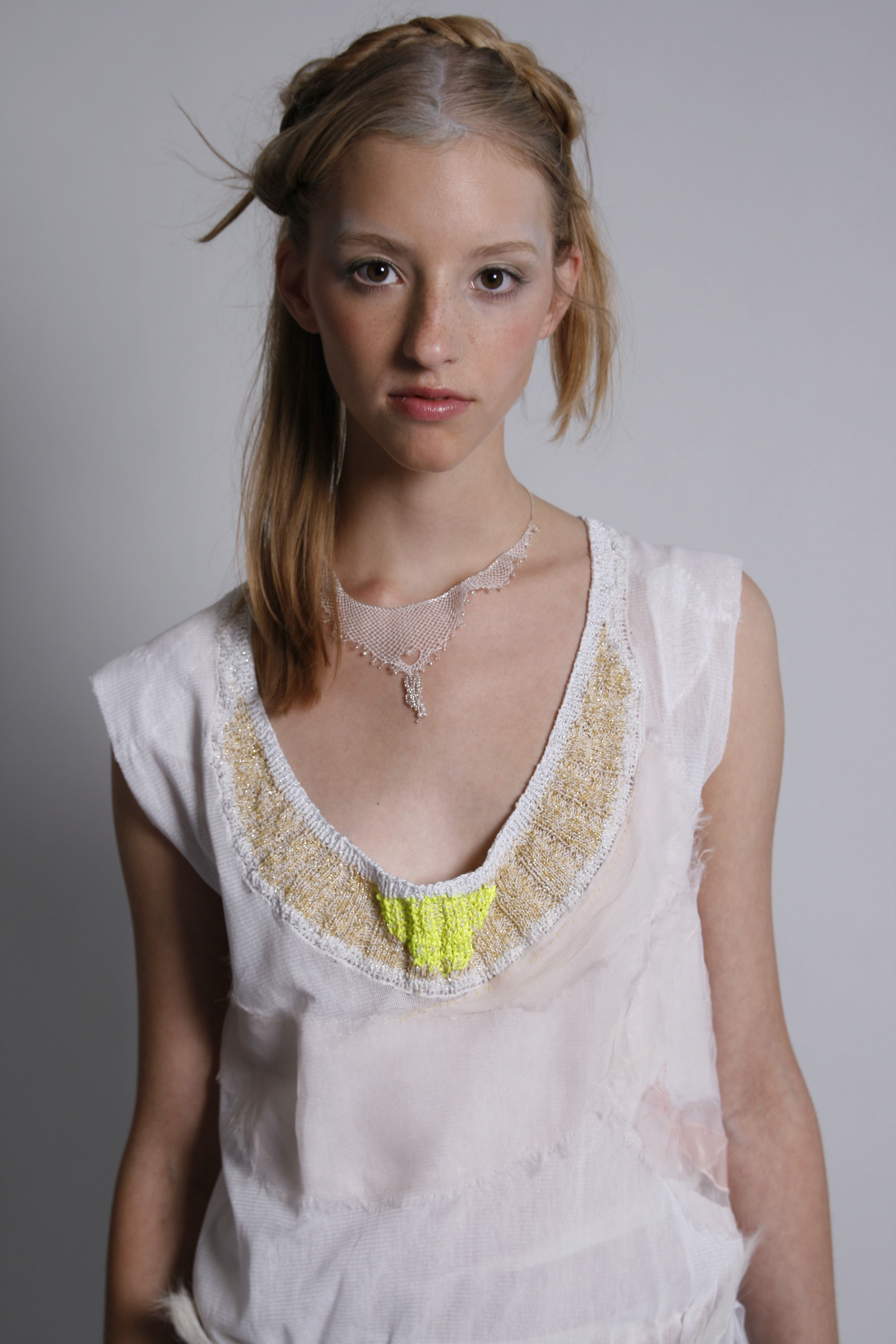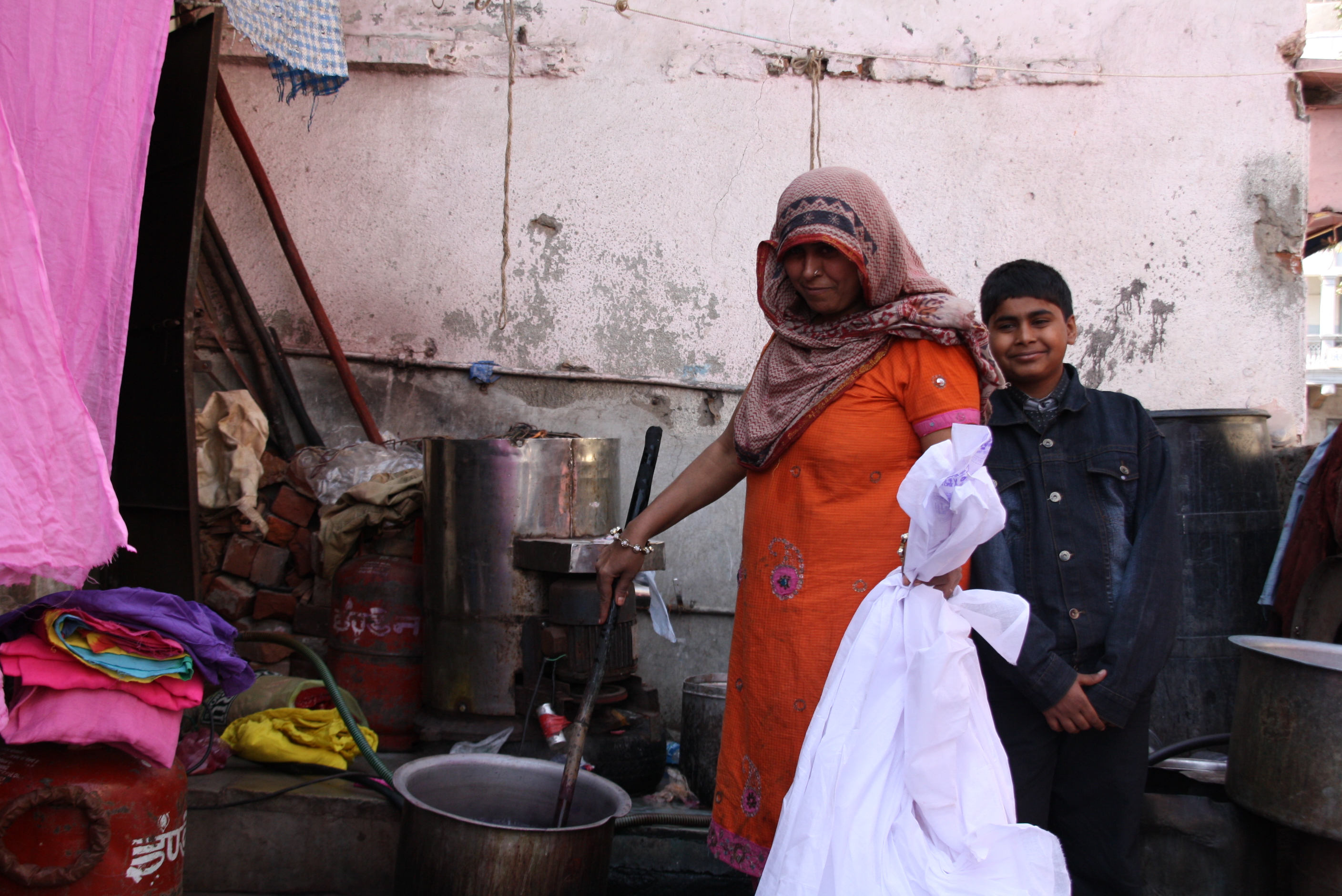Painted Circle
Since 2006 we develop and enjoy collaborations with kindred spirits in a varying line-up, leading to unique garments, performances, presentations and more. Painted Circle are makers, masters, designers, artists -- caretakers of almost vanishing handwork. We share meaning, knowledge and the joy of making.
Since 2006 we develop and enjoy collaborations with kindred spirits in a varying line-up, leading to unique garments, performances, presentations and more. Painted Circle are makers, masters, designers, artists -- caretakers of almost vanishing handwork. We share meaning, knowledge and the joy of making.
MAGDALINA TONEVA is a master of the needlepoint (kene) technique from Sofia, Bulgaria,
who is one of the Bulgarian Masters that form the PAINTED Circle community. In a heartfelt narrative, she shares her personal story with the kene technique and reveals a little bit about her collaboration with Painted.

I learned the kene technique a long time ago. As I’m a health worker, one of my patients - an older lady who was a member of the Association of Folk Artisans and Craftsmen, ignited my interest in kene. I saw her practicing it in the hospital and immediately thought I wanted to learn how to make it myself. I went to her home a couple of times where she showed me the basics of the technique. From then onward, after a lot of practice, I started experimenting with it. After gaining some experience I applied to be a part of the the Association of Folk Artisans and Craftsmen. Taking a week-long exam, I finally became a member and haven’t stopped creating ever since. I’ve always been in love with the kene technique. From the moment I saw it for the first time I thought that this technique was like a needle dance in the air because it’s very free. It symbolises ethereality and a dream to me. Traditionally in the past it was used for the creation of headcloths and handkerchiefs worn in the city as accessories. But the technique allows a lot of freedom. Nowadays you can do anything with it - from table covers to wall panels and clothing. It’s great for experimentation!
My collaboration with PAINTED further enriched my creative experience with kene. Taking inspiration from kene’s playful nature they pushed my creativity into exploring the innumerable possibilities of the technique. Our partnership was a very emotional experience for me.
At the beginning I approached the project with slight nervousness because I needed some time to adjust myself to untraditional ways of working. PAINTED gave me a big field for creative expression and I liked that very much. One of the things I particularly enjoyed were some pieces of jewellery with kene elements that we made collectively. We also put kene details on tights which was very fun. This experimentation with the technique enriched my experience a lot.
These recent years there has been a lot of development of the Bulgarian crafts. Our national folk art is limitless and there’s always more things to explore. There’s always this sense of community around the crafts. Especially around craft fairs, people gather around from many different cities and everyone creates something. This is how we all meet and exchange our knowledge, we buy each others’ collections and share stories. There are also young people who are interested and they try out kene too, but these techniques of course take a lot of time. They say that good things always happen with a lot of patience and love. And we the masters are always there to teach what we know to everyone who is curious.
interview by Eliza Lachkova, 2020



RUMJANA RAKOVSKA is a needlepoint (kene) and frivolite master from Sofia, Bulgaria, who is one of the Bulgarian Masters that form the Painted Circle community. Mastering the rare technique, she collaborates with Painted with the wish to transfer this knowledge to more people. As Painted cherishes the stories of the people behind the hands of our collective, we asked Rumjana to tell us a little bit about her experience with kene and her contribution to Painted Series.
I learned how to do kene from a master called Radka Karagitlieva. This woman had gone around all of South Bulgaria where the kene technique is very widespread and had collected samples of the technique which she put into two books. I stumbled upon her work accidentally when I was watching a TV show. I immediately got interested and called the company to ask them for her contact. It was quite a long and tormenting process because I had to wait until the autumn for her to go to Plovdiv and meet me. I had seen kene before already because I was regularly visiting the Association of Folk Artisans and Craftsmen in Oreshak. There I saw fantastic things, some of which were made by Karagitlieva’s students. The books were good but I wanted to find a person who can teach me face to face. There was no Internet at that time of course. Now there are video masterclasses that can teach you but it’s a different feeling when you are being observed by a master while studying the technique in person. Then you have the possibility to immediately get feedback if you’re doing something wrong and correct it and this allows to absorb the purest form of the technique. This technique is one of the most delicate that I have seen and this makes it so exceptional. It just brings me personal joy to use it.
Every true master when they reach a higher level of their skill has to show other people what they know. This is why doing a workshop with PAINTED at the National Academy of Arts in Sofia in 2016 and teaching young people my knowledge was very special. It was a very interesting and pleasant activity teaching the girls who participated the kene technique, even though it lasted only one day. The girls were very enthusiastic about it which was a beautiful thing to see. The way they were concentrating on every little action that I did was a thing I will never forget. This day was one of the days when I was filled with happiness.
Except for the group of young people who were part of that workshop, however, I haven’t met any other people who had the desire to learn the techniques I know. Unfortunately it is very hard to preserve Bulgarian crafts nowadays. We the masters who are familiar with crafts are getting older and sadly there are very few people who are willing to learn and preserve our knowledge. And this is a type of knowledge that has been accumulated throughout many years. It is heart breaking to see it disappear. This is why I applaud PAINTED’s efforts and contribution. Doing several collaborations with them, besides the workshop was very untraditional. That’s what I loved the most about it. The things that I was asked to do were very unique and untraditional to me and this was a great challenge. It was a very stimulating experience.
interview by Eliza Lachkova, 2020

TOM HOMMES is a biology teacher and master in intuitive knitting- from Arnhem. Every one of the more than 50 sweaters he made, has its own theme and tale to tell; some of them being worn to illustrate a topic during Biology class (for example: the ‘prisma’ sweater). We love his amazing way of combining various threads making smooth and unexpected transitions in colour and yarn and knitting in stories on life and natural phenomena.




RAJIYABEN RUBY's dyeing
The sleeves for the Kite Remains Dress were dyed with so much precision in a light green color that you can speak of the mastery of Rajiyaben Ruby







